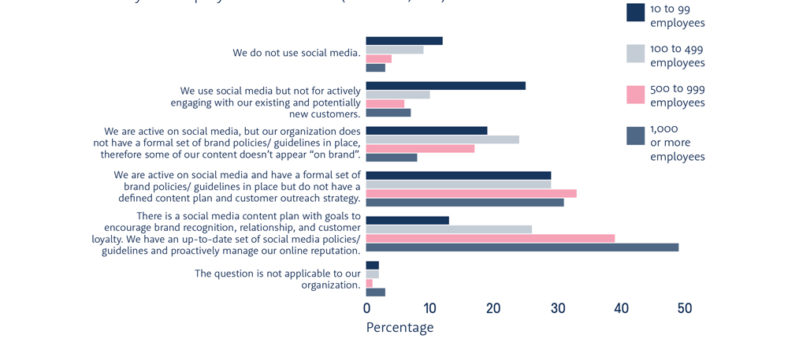 By Peter Cantelon
By Peter Cantelon
If you are part of a member-based, board-run organization (like a not-for-profit) and you struggle to get enough members to even fill your board then you need to ask whether your organization should continue to exist.
The traditional structure of a not-for-profit is as follows: members are the base of the pyramid, the strong foundation; members select a small group to implement and exercise the vision and mission of membership through the wise management of resources like money, property, volunteers and staff.
This structure is simple, elegant and eminently wise — when it works and operates within the spirit of how it was envisioned.
An organization starts as an idea. This idea comes from a passionate person or people. These people, motivated by the passionate idea begin to work on implementing a vision to communicate the idea to the world. As part of this process more people are attracted until you have a movement, usually of volunteers, working and bringing unique talent and sweat equity to bear on the idea which has become a vision.
This group will often gather and pool resources in the form of product, property, facilities, money and more in their work unfolding the vision.
Eventually the group gets to a point where the value of incorporating (say as a not-for-profit) makes sense. It gives the group unique tax and funding opportunity and can help to take things to the next level as it requires infrastructure to be put in place — rules of operation like bylaws, a structure that enshrines the idea as a mission governed by people who report and communicate in a certain required way that includes financial reports, regular meetings of a board, an annual meeting to report to members and provide opportunity to ensure leadership understands and continues to implement the will of those members who are the ultimate stewards of the idea.
Too often however organizations lose momentum for one reason or another. People lose interest, members drift away, communication slows down or stops, and strong systems of governance corrode or corrupt to a place where membership has no privileges or purpose.
Strong membership needed
The key to a healthy organization is a strong and vital membership. The key to building this membership is planned, intentional work to constantly communicate the idea and its value and relevance.
Members must be invested in the organization. In for profit, board run companies members are shareholders and investors. They are literally, financially invested in the company and this gives them rights, the primary one being voting for a board of directors.
In a not-for-profit members must also be invested. Sometimes this is financial, sometimes this is volunteer sweat equity, sometimes this is tax dollars invested on their behalf by another organization they are members of — their city, run by the board they elect, their council.
Without a strong membership a board of directors becomes beholden and accountable only to themselves and devolves into a self-fulfilling coven focused on their own needs.
This is radically unhealthy and deceptively alluring as such a board becomes comfortable with not having to be held accountable, not having to deal with members, failing to recognize that this is the only reason they exist. The composition of a board is a reflection of the needs, priorities, and personality of the membership — if there is no membership, they reflect nothing.
Membership is the lifeblood of board run organizations, it is where an organization gets its vitality and creativity from. If it is anemic or non-existent the organization will ultimately suffer and the questions of “why are we here?” or, more frightening “why are YOU here?” get louder and louder.
Ultimately it comes down to one question for those left — how passionate are you about this idea? Are you passionate enough to work to save the life or this dying beast? Are you passionate enough to mobilize members and reinvigorate the body?
If you find yourself doing all the right things to draw members (communicate, listen, nurture, advertise, meet people, create opportunities to infect the community with your vision, outreach, etc.) and still there is no harvest then you must ask the most difficult question of all — is it time we close?
An idea is not necessarily forever. For all things there is a season. The only thing worse than riding a dying horse is riding a dead horse. Some ideas need to die so that they can rest a while and be resurrected as something bright and new otherwise you are just keeping a zombie.
Another option is to learn if your passionate community is elsewhere. Maybe the most passionate people about your idea are 100 km away and have a thing of their own? Maybe you should join with them to sustain your idea and passion until such time as local support reaches critical mass.
Perhaps being incorporated no longer works for you and you should consider shedding the status in favour of becoming a private business.
It is challenging to run a member-driven organization but it is member-driven for a reason. It is easy to fall into the trap of believing that things would be so much easier if there were no members and you with five or six of your peers could make all the decisions accountable to no one — but this is a path that ultimately leads to irrelevance.
It is true, sometimes people become members of organizations for the wrong reasons. Sometimes members betray a motivation to harm or diminish the organization instead of help to build it up. When this happens, a board has tools available to it. It can remove a harmful member like a surgeon removing a malignant tumor. It can be painful but it leads to health. That being said a good surgeon does not cut off the entire arm when they can simply excise a 3 cm nodule.
Membership represents healthy boundaries to an organization and its board. Some think that unfettered freedom leads to unfettered growth but nothing could be further from the truth. In reality boundaries and constraints can lead to some of the most creative acts by organizations.
Food for thought based on one simple premise – nothing is more important to a board driven organization than membership.
Peter Cantelon, married father of three, lives and works in Morden, Manitoba and has been a writer and columnist for more than 30 years. In this time, he has had the opportunity to be a part of countless non-profit boards in various roles and is most passionate about good governance and membership.




